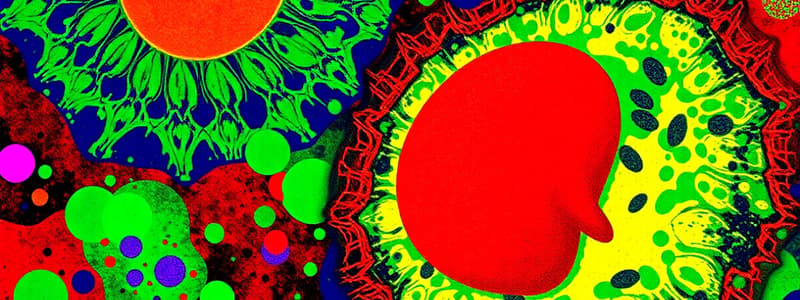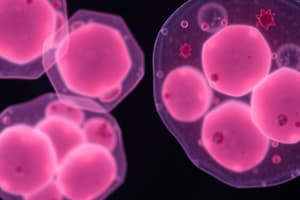Podcast
Questions and Answers
What year was the first continuous cell line cultured?
What year was the first continuous cell line cultured?
- 1960
- 1975
- 1951 (correct)
- 1945
Which advance significantly aided cell biology research in the 1950s?
Which advance significantly aided cell biology research in the 1950s?
- Polymerase chain reaction
- Development of fluorescent dyes
- Gene editing techniques
- Electron microscopy advancements (correct)
What is the branch of biology that focuses on the study of cells?
What is the branch of biology that focuses on the study of cells?
- Cytology (correct)
- Microbiology
- Genomics
- Molecular Biology
What technique is mentioned as a method developed to improve cell culture?
What technique is mentioned as a method developed to improve cell culture?
Which of the following was discovered in jellyfish that contributed to cell biology research?
Which of the following was discovered in jellyfish that contributed to cell biology research?
Flashcards are hidden until you start studying
Study Notes
Growth of Cell Biology
- Cell biology research experienced rapid growth in the 1950s, paralleling advancements in molecular biology.
- The capability to maintain, grow, and manipulate cells outside living organisms was established.
HeLa Cells
- First continuous cell line cultured in 1951 by George Otto Gey and his team, derived from Henrietta Lacks' cervical cancer cells.
- HeLa cells became a pivotal tool in the study of cell biology, similar to the significance of DNA structure in molecular biology.
Advancements in Cell Study
- The 1960s yielded significant progress, which included:
- Characterization of minimal media requirements for cell cultures.
- Development of sterile cell culture techniques.
- Electron microscopy advancements facilitated enhanced cellular study, leading to discoveries like:
- Transfection methods for introducing nucleic acids into cells.
- Green fluorescent protein (GFP) from jellyfish, aiding in visualization of cellular processes.
- Discovery of small interfering RNA (siRNA), crucial for gene regulation studies.
Continued Evolution of Cytology
- The study of cell structure and function is known as cytology.
- Continuous advancements in equipment, such as cytology microscopes and specialized reagents, support research, particularly in clinical applications.
Studying That Suits You
Use AI to generate personalized quizzes and flashcards to suit your learning preferences.




